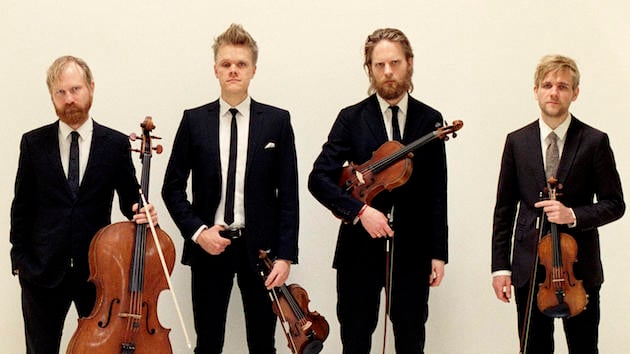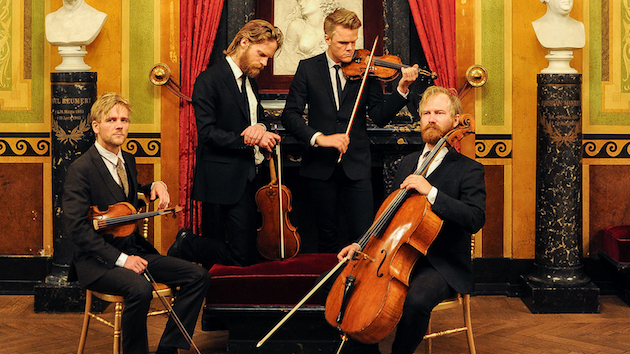
It’s not easy for a quartet to forge a distinctive sound and approach while playing masterworks that many other professional quartets play well. But the Danish String Quartet is one of the groups that has managed it, and you could hear it right from the start of Beethoven’s Op. 130 String Quartet, the centerpiece of their program for Cal Performances at Hertz Hall in Berkeley on Sunday.
Op. 130 (the Quartet No. 13 in B-flat) has enough personality (or weirdness, depending on how you look at it), to let a quartet fly its freak flag, especially when you append the “Grosse Fuge” (Great fugue), its original finale, which extends the piece to about 45 minutes in performance. That isn’t really the Danish quartet’s way: they make the shifts in emotional tone, key, dynamics, and tempo seem natural, if not smooth. And the reason is a remarkable unanimity in sound and approach that, even when the music is straining to the breaking point, preserves tonal balance and a through line.
In the brief unison octaves at the outset, and again at the beginning of the fugue movement, the quartet produced a perfect encapsulation of what makes them distinctive. Whether at pianissimo (the opening) or fortissimo (in the fugue), the beauty and presence of the sound lifted off the strings without effort and filled the hall. There’s plenty of virtuosity needed to make this quartet come off, but there was no point at which the Danish String Quartet sound seemed strained or unconnected to what had come before. The tempo/mood changes of the first movement happened without fuss and the counterpoint of the Andante con moto movement was so subtly managed you could barely notice the handoffs.
Now you could say, as Larry Rothe does in the program notes, that the musical world has caught up to Beethoven and the disruptions that so bothered the initial audiences for this piece are just part and parcel of our musical environment and the concert pieces that come out of it. But this quartet’s ability to ride the storm and keep their hands steady on the tiller are part of what made this particular interpretation so singular. The magic of subsuming all of the parts of the piece into a cohesive whole isn’t something you always hear in performance but it’s clear that Beethoven, in the brief scherzo, the gorgeous cavatina, and the vibrant German dance, was not trying to make the whole piece “hard” or intellectual.

The DSQ built the concert around Op. 130, starting off with a Bach fugue, arranged from the Well-Tempered Clavier, a source of Beethoven’s late interest in fugue, and ending with Alfred Schnittke’s highly contrastive String Quartet No. 3, which begins with a phrase from Orlando de Lasso’s Stabat Mater and a short quotation of the Grosse Fuge theme (as well as Dmitri Shostakovich’s musical moniker DSCH [D–E-flat–C–B], which is the Grosse Fuge’s G–G-sharp–F–E transposed up a fifth). Schnittke’s witty and brilliant synthesis of these materials is only the beginning for a quartet that rivals Beethoven’s in finding unity in opposites.
And again, it was the DSQ’s way of diving into these oppositions without letting them affect their overall sound that made it so easy to hear this piece. It was like a brilliant math teacher unspooling a difficult concept and making it comprehensible. You didn’t see the work that went into the performance, yet the Danish String Quartet made the work present and digestible. Sure, there’s a waltz that turns into a scherzo in the second movement, while still quoting Lasso. Why not?




